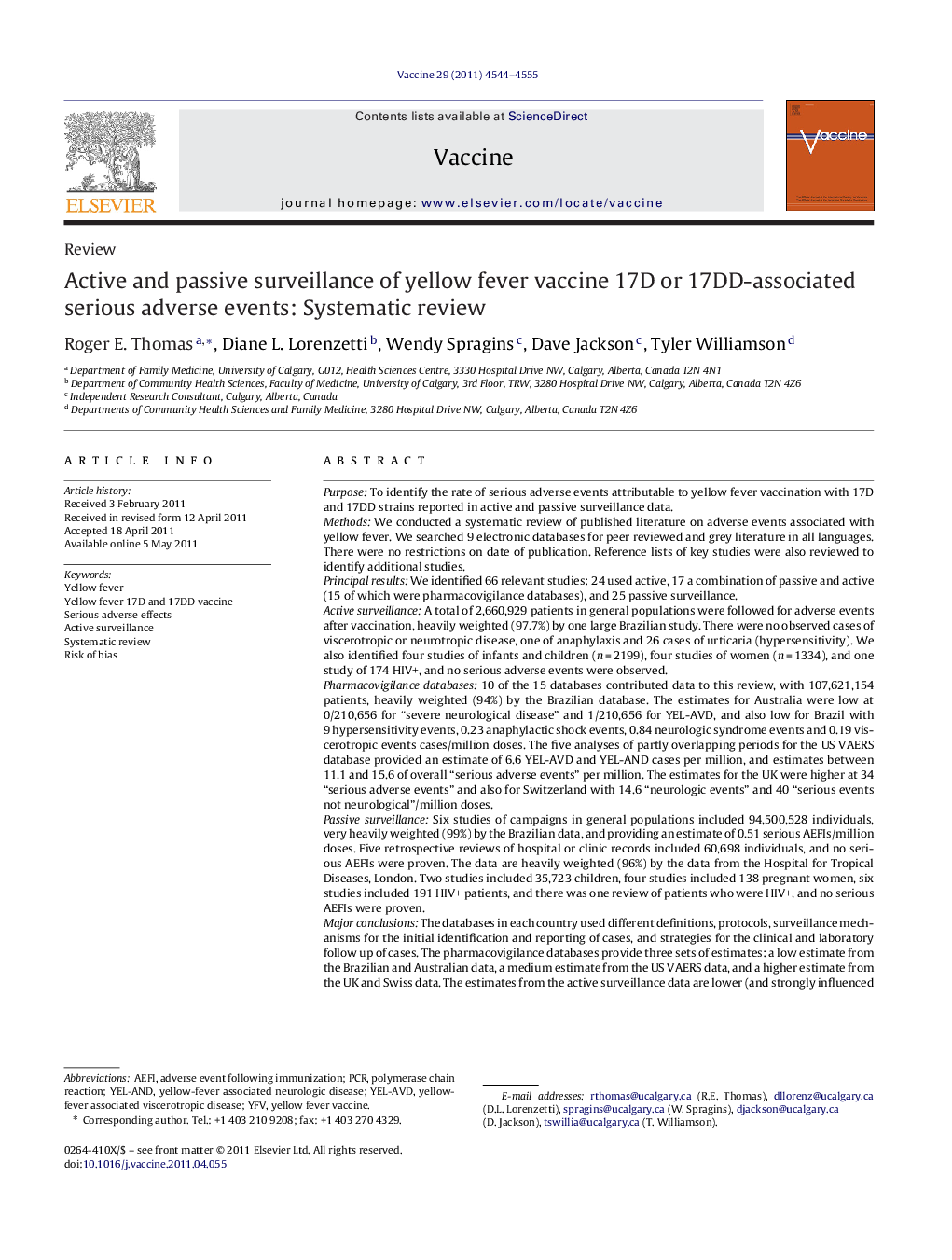| Article ID | Journal | Published Year | Pages | File Type |
|---|---|---|---|---|
| 10969913 | Vaccine | 2011 | 12 Pages |
Abstract
The databases in each country used different definitions, protocols, surveillance mechanisms for the initial identification and reporting of cases, and strategies for the clinical and laboratory follow up of cases. The pharmacovigilance databases provide three sets of estimates: a low estimate from the Brazilian and Australian data, a medium estimate from the US VAERS data, and a higher estimate from the UK and Swiss data. The estimates from the active surveillance data are lower (and strongly influenced by the Brazilian data) and the estimates from the passive surveillance studies are also lower (strongly influenced by the London Hospital for Tropical Diseases data from the early 1950s). Sophisticated pathology, histopathology and tests such as PCR amplicon sequencing are needed to prove that serious adverse events were actually caused by the yellow fever vaccine, and the availability of such diagnostic capability is strongly biased towards recent reports from developed countries. Despite these variations in the estimation of serious harm, overall the 17D and 17DD yellow fever vaccine has proven to be a very safe vaccine and is highly effective against an illness with high potential mortality rates.
Keywords
Related Topics
Life Sciences
Immunology and Microbiology
Immunology
Authors
Roger E. Thomas, Diane L. Lorenzetti, Wendy Spragins, Dave Jackson, Tyler Williamson,
